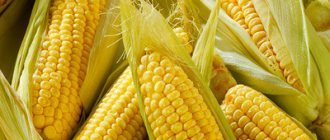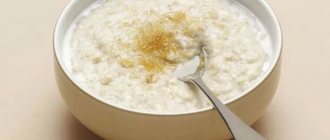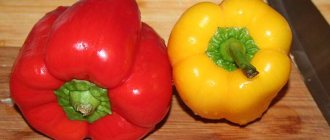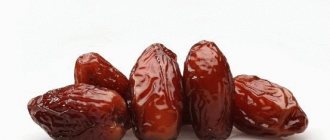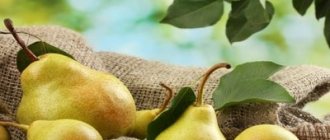If you have been suffering from chronic gastritis for a long time, you have probably studied the principles of therapeutic nutrition well.
During an exacerbation, the diet suffers significantly, because severe pain causes an aversion to food. Therefore, even when hospitalized in a hospital at the stage of exacerbation of chronic gastritis, the patient receives only drink, and liquid and pureed food is allowed after the pain subsides. Proper nutrition during remission is the key to the absence of periodic exacerbations. But this does not mean that a patient with chronic gastritis eats exclusively oatmeal and steamed cutlets.
The diet can and should be varied so that it meets all the body’s needs for vitamins, minerals, proteins and other components. As a tasty addition to your diet, use nuts - a valuable product rich in nutritional properties. And how, when, which and how much, read below. Let's start with the beneficial properties of different types of nuts.
About the benefits and indispensability
Any nuts are a healthy product and quite high in calories. The high content of Omega-3 fatty acids makes nuts an excellent preventative against atherosclerosis, heart and brain diseases. The rich vitamin and mineral composition determines the antioxidant properties of the product, thanks to which nuts are indispensable for the prevention of oncology.
Nuts are mental stimulants and improve the functioning of all organs and systems. For constipation and diarrhea, for chronic gastritis with normal and low acidity, nuts stimulate the activity of the stomach and intestines and promote healing of the inflamed mucous membrane. It is difficult to replace nuts in the diet with anything; there is no worthy alternative.
Benefits of nuts
Each type of nut has a beneficial effect on organs and systems. Thanks to vegetable oils, the production of hormones of the endocrine system is normalized, vitamins stimulate the immune system, minerals in free form and in the composition of inorganic salts normalize the transport of substances through the cell membrane.
Walnut
Of the minerals, walnuts are rich in phosphorus, calcium, iron, potassium, iodine and magnesium. Vitamins contained in the product: retinol (vitamin A), ascorbic acid (vitamin C), tocopherol (vitamin E), B vitamins. The nut promotes the production and formation of red blood cells, stabilizes the functioning of the liver and kidneys, relieves a person from disorders of the nervous and immune systems and provides an adequate immune response to external stimuli.
Pine nut
Due to the large amount of carbohydrates and proteins in the amount of one hundred grams, a small pine nut can quench appetite, restore performance, and regulate metabolic processes. In combination with honey it has an anti-inflammatory effect. Thanks to essential oils, it destroys microorganisms. Pine nuts are superior in composition to other types in terms of the concentration of minerals and inorganic salts.
Almond
The nut is highly recommended by endocrinologists and nephrologists; almond oil is effective for inflammatory and sclerotic kidney diseases, disorders of the production of sex hormones in men and women.
Hazelnut
Due to the high concentration of vitamin E, a natural antioxidant, it slows down the aging process of the skin. Mandatory in combination with dried fruits for heart and vascular diseases, enriched with potassium. Hazelnuts restore strength and fight constant fatigue.
Peanut
Particular attention is paid to the “groundnut”, as it is called in literary sources. The benefits of peanuts are comparable to those of other nuts, and the cost is much lower compared to others. It turns out that the warehouse of useful microelements is more accessible to a person with an average subsistence level.
The product is best consumed slightly fried; it acquires a pleasant taste and is freed from the surface shell, which is not absorbed in the gastrointestinal tract. Peanuts include a group of B vitamins and improve the transmission of nerve impulses, affecting attention and memory.
Use for illness
Nutritionists recommend that healthy people consume a handful of nuts per day. With gastritis, not only the amount of consumption is reduced, but the range of products is also limited. The following types of nuts are allowed:
- Walnuts – 20 grams;
- Cedar - 20 grams;
- Peanuts – up to 50 grams;
- Cashews – up to 5 grams.
- Pecans – up to 10 grams.
- Hazel (hazelnut) – up to 10 pieces per day.
- Coconut – up to 30 grams of fruit pulp.
The following types of nuts are prohibited for gastritis:
- Manchurian. Neither the fruit itself nor medicinal tinctures from it can be used.
- African kola nut. Not recommended for gastritis due to the high content of caffeine and other natural stimulants that provoke increased secretion of gastric juice.
- Nutmeg. The fruit cannot be used for gastritis even as a spice.
- Brazilian. Even for healthy people, the consumption of this fruit is limited to 2 nuts per day. It is not advisable to use it if you have gastritis.
- Pistachios.
- Raw almonds due to the presence of hydrocyanic acid in the composition.
Treatment with nuts
In some cases, nuts become a medicine for gastritis in combination with certain ingredients. For hundreds of years, grandmothers have been passing on the secrets of all kinds of traditional medicine recipes. With gastritis, it is possible to use the suggested tips, tested by hundreds of people, without fear.
Recipe No. 1
- Pine nut shells - thirty grams;
- Propolis – thirty grams;
- Potentilla root (galangal) – thirty grams;
- Ethyl alcohol 70% – one hundred and fifty grams.
- Celandine - thirty grams;
- Vodka – one hundred and fifty grams;
- Aloe juice – one hundred and fifty grams;
- Linden honey - one hundred and fifty grams.
Place the shells, propolis, galangal in a glass container, pour alcohol. Infuse for three or four weeks, shaking occasionally, but not stirring; the container should not be opened.
Place celandine in another glass bottle or jar and fill with vodka. Infuse for seven days.
Mix aloe juice and linden honey. Mix the resulting liquids. The resulting product should last five to seven days. The result is a medicine in a volume of six hundred grams. It contains a high level of concentration of essential oils and vitamins that are useful for patients with gastritis of any type.
Use in the morning, on an empty stomach, a tablespoon, with a small piece of butter. Treatment continues until the tincture runs out. Repeat treatment every two months, four times a year.
Recipe No. 2
- Walnuts – one hundred and fifty grams;
- Ethyl alcohol 70% – two hundred grams.
Peel the walnuts, place in a glass jar, cover with alcohol and leave for a week in a warm, dry room without access to light. Strain the resulting liquid. Take a teaspoon of tincture per day. Recommended for patients with hypoacid gastritis, it stimulates the production of hydrochloric acid.
Recipe No. 3
- Peanuts (skin) – four teaspoons;
- Vodka – two hundred and fifty milliliters.
Place the peel in a glass bottle, add vodka, close tightly and place in a cool, dark room for fourteen days. Strain the tincture through a sieve, consume ten drops with pasteurized milk. Use for chronic gastritis in remission.
With increased acidity
The acceptable daily amount of nuts is not universal. With hyperacid gastritis, even the recommended dose can cause discomfort and pain. This is due to the fact that nuts belong to food group 3 and are considered a moderately heavy food. It is difficult for the stomach to digest them even in small quantities.
Interesting! The average digestion time for nuts lasts from 2.5 to 3 hours . The recommended digestion time for gastritis with high acidity is 2 hours.
However, with stable remission and regular dieting, you can eat a small amount of nuts 2-3 times a week, dividing the daily intake in half. To help your stomach cope with the fruits, you can grind the nuts in a food processor and add them to yogurt or porridge.
Is it possible to eat nuts with gastritis?
Gastritis therapy requires mandatory diet correction. For patients with different forms of pathology, specialized diets and a list of permitted products have been developed.
For any gastritis, it is unacceptable to consume fatty, salty, canned or sour foods, alcohol and soda, chocolate, etc.
But doctors have many doubts regarding nuts. Is it possible to eat nuts for gastritis, which ones are allowed and in what quantities? The possibility of using such a product depends on the type of inflammatory lesion of the stomach.
According to nutritionists, you can eat nuts with gastritis, but only in limited quantities and taking into account the acidity of gastric secretions.
If you have gastritis, you can eat nuts in limited quantities.
Time matters
So, to the question, which ones and how many, we answered. Now let’s decide when is the best time to introduce nuts into your diet. Logic dictates that due to their rich composition, you would need to eat nuts in the morning on an empty stomach. Both satiation and vitamin supply for the whole coming day! For healthy people, this option is acceptable. But for any type of gastritis, it is strictly contraindicated.
If you eat fruits on an empty stomach, the secretion of gastric juice will increase, and this is absolutely of no use to you. It is optimal to use nuts as a second snack (afternoon snack). The stomach is no longer empty, and excess hydrochloric acid will not be irritating.
Walnuts, how many cleaning methods are there?
We know 7 cleaning methods, among them there is one - the most proven one. This is buying already shelled walnuts! Not only do you not need to peel the nuts, you also immediately see the nut kernels and can evaluate the quality of the product. And what a saving of time and effort!
The remaining 6 ways to clean walnuts:
- the “door hinge” method is an adventurous method, but most often the most reliable,
- blow with a hammer; for this, do not forget to soak the walnuts in warm water for a couple of hours to soften the shells a little,
- the “bare hands” method, most suitable for strong and resilient hands; for it, two walnuts need to be pressed against each other and squeezed,
- using a sharp knife is a dangerous way to peel walnuts; suitable for experienced and dexterous people, contraindicated for children,
- the use of various gadgets and devices, including a screw press similar to the Nutcracker,
- freezing is the most original of all methods of cleaning walnuts.
Let's talk about the last cleaning method in more detail. Using a freezer to crack walnuts is due to the properties of water, which expands when frozen. Place the walnuts in a freezer-safe Ziploc bag and seal tightly. Place the sealed bag in the freezer for several hours. The water contained in the nuts and their shells freezes, expands and... the walnut shells crack.
This method is good for walnuts intended for baking. Nuts become a little soft when frozen.
Rye muffins with walnuts on Varenets, see recipe here
The value of different types: walnuts, cedar, peanuts, etc.
One of the distinctive qualities of the product is its calorie content. For different types of nuts, it varies between 670 – 750 Kcal per 100 grams.
For comparison, the same amount of lard contains 797 Kcal. Therefore, for people trying to lose extra pounds, nuts are not the best choice.
High energy value for gastritis is unlikely to matter, since the allowed amount of product per day will slightly increase the total calorie intake. But when you eat nuts, your body will receive essential amino acids, minerals and vitamins.
In the table we have indicated the beneficial properties of various types of product .
| Name | Kcal | Useful ingredients | Properties | |||
| Vitamins | Micro and macroelements | fatty acids and amino acids | ||||
| Walnut | 628 — 675 | Group B, RR, C, K, A, E, Omega - 3 | Manganese, iron, zinc, potassium, calcium, sodium, phosphorus | Glutamine, asparagine, valine, oleic, palmitic, folic, linoleic, etc. | Stimulates the activity of the gastrointestinal tract, strengthens bones and blood vessels, treats anemia, is a preventative against cancer and diabetes | |
| Cedar | 875 | Leads in the amount of B vitamins, contains E, K, C | Zinc, magnesium, phosphorus, iron, copper, iodine | Polyunsaturated fatty acids – up to 50% | Treat gastritis and peptic ulcers, anemia, strengthen the immune system, bones and joints | |
| Peanut | 552 | Niacin, group B, C, PP, E | Zinc, iron, manganese, magnesium, potassium, phosphorus | Tryptophan, isoleucine, valine, isoleucine, glutamic acid, glycine | Removes toxins, treats prostatitis and impotence, and is useful during pregnancy. Strengthens muscles and blood vessels, normalizes blood composition. | |
| Hazel | 704 | A, RR, group B, C | Copper, fluorine, magnesium, potassium, zinc, phosphorus, iodine, | Omega – 3, Omega – 6, oleic, palmitic, stearic, linoleic, etc. | Strengthens blood vessels and the heart, treats oncology and blood diseases. Stimulates the gastrointestinal tract, strengthens the central nervous system and immunity | |
The composition of more exotic types of product is identical to those listed, with minor quantitative differences.
Walnut, where did its name come from in English and Russian?
Walnut in English is walnut, the word comes from the Old English wealhhnutu, literally “foreign nut” (from wealh “foreign” + hnutu “nut”), as it was brought to England from Gaul and Italy. The Latin name for the walnut was nux, meaning "Gallic nut".
The Russian name is also associated with the origin of walnuts. Pavel Syutkin, a historian of culinary and Russian cuisine, writes: “In Russia, acquaintance with walnuts apparently occurs in the 12th-13th centuries, when close contacts were established with Byzantium. It is from there that nuts come to us, but they are called “Greek”. Then many products and objects coming from this part of the world are called “Greek”, for example, buckwheat, known to everyone (according to one version of the origin of this word).”
Walnuts were also called “royal nut”, “Greek nut” and “Voloshsky nut” in Russian.
Fruit of the walnut tree
Reasonable accuracy
Dietary nutrition is the basis for the treatment of any gastritis. Therefore, nuts, like all other foods, should be consumed without exceeding the recommended dosages. The situation when you quietly eat a large amount of product in the evening, in front of the TV, can end in the hospital.
Attention! All nuts can cause allergic reactions, so they are contraindicated for patients with individual intolerance.
Also, nuts in large quantities cause heaviness in the stomach, nausea, and indigestion. Therefore, try not to exceed recommended doses. If this does happen and your stomach hurts after eating nuts, you need to:
- Call a doctor.
- Rinse your stomach yourself.
- Drink any enzyme preparation - Mezim, Festal.
The further scenario will be determined by doctors.
Walnuts, where do they come from? From Greece?
Walnuts, according to one of the most common versions, originated in Northern India. In the middle of the 15th century. Constantinople, the capital of Byzantium, fell under the onslaught of the Turkish Sultan. Pavel Syutkin: “Trade ties with Russia were interrupted for a long time. Around the 16th-17th centuries, their new name appeared in Rus': “Volosh nuts”. These are the same walnuts, only brought to us from Wallachia (the south of modern Romania).”
In Vladimir Ivanovich Dahl’s we find: “Nut is masculine, a tree fruit in a hard, strong shell. Sometimes they say instead of hazel and hazel, walnut or walnut tree, meaning Voloshsky nut, walnut.” By the end of the 19th century, the name “walnuts” became predominant in the Russian language.
Encyclopedic Dictionary of Brockhaus and Efron : “Walnut, Voloshsky nut (Juglans L.).”
Eggplant rolls with walnuts, see recipe here
Now, as promised, let's talk about the benefits and harms of walnuts.
Folk recipes
Traditional medicine suggests using nuts as a remedy.
This mainly applies to walnuts. This fruit is considered waste-free - the kernels are eaten, and the rest is used for treatment. You can even dye your hair with the peel of an unripe nut. The main medicinal properties have walnut septa , from which decoctions and alcohol tinctures are prepared.
Important! For gastritis of any etiology, alcohol tinctures are not recommended. Acute gastritis is also a contraindication for the use of decoctions.
Treatment with a decoction of partitions is used for severe iodine deficiency, as well as for migraines, metabolic disorders, diabetes, prostatitis, and mastopathy. The remedy is also recommended for intestinal disorders.
In each specific case, the use of a decoction of partitions should be agreed with a doctor; it may not be indicated for your illness. If the doctor recommends a prescription, he will determine for you the frequency of dosage and the duration of the course of treatment.
Prepare the decoction as follows: 1.5 cups of dried and crushed partitions are poured with 3 cups of boiling water. Simmer the broth in a water bath for half an hour. As soon as the solution has cooled completely, it is filtered and poured into a dark glass container. Store on the refrigerator door for 2 – 3 days. The classic use is to take a sip before each main meal. But we would recommend using the decoction 30 minutes after eating if you suffer from chronic gastritis.
When is Walnut Day celebrated?
In June 1949, the United States proposed an annual observance of National Walnut Day. This was done to popularize the royal nut. And on March 3, 1958, the 34th President Dwight David Eisenhower issued an official statement that this day was now fixed for May 17, then the celebration of the first National Walnut Day took place.
Ripe walnut
What is gastritis like?
Is it possible to eat persimmons with gastritis?
There are two types of gastritis: acute and chronic form.
The acute form of gastritis occurs due to the one-time influence of harmful factors:
- eating low-quality food that contains microbes and the toxins they produce;
- the use of irritating substances (spices and seasonings) or long-term use of medications (salicylic acid).
The acute form of gastritis is characterized by a sharp inflammatory process of the mucous surfaces of the stomach.
The chronic form of gastritis is caused by the following factors:
- The presence of the bacterium Helicobacter pylori in the body. Today, this pathogenic organism is considered the main cause of gastritis and ulcers.
- Poor nutrition: irregular eating patterns, eating fast food too often and not chewing food thoroughly, frequent use of irritating substances such as spices.
- An unhealthy lifestyle (alcohol and regular smoking), which often causes chronic gastritis.
- Psychological problems: neuroses, stress, depressive disorders.
- Long course of treatment with certain medications (anti-inflammatory, antitumor).
- Immunity disorder, which is accompanied by the production of antibodies that negatively affect one’s own stomach cells. For example, chronic forms of gastritis appear with autoimmune disorders.
In addition, the appearance of a chronic disease is influenced by:
- heredity;
- diseases of the endocrine system;
- lack of vitamins;
- metabolic disorders and others.
Gastritis is characterized by increased production of enzymes and hydrochloric acid in the stomach. This contributes to irritation of the walls, disruption of their functioning and physiological processes. The main symptoms of the disease are pain, heaviness and heartburn after eating.
Accordingly, both forms of gastritis require a special diet for the disease. It is recommended to exclude rough foods from the patient’s diet, which can aggravate the condition of the mucous membranes. For this reason, the question of whether nuts are ok for gastritis and ulcers is a rather controversial issue.
Effect on the stomach
Is it possible to eat apples with gastritis?
The biggest negative effect on the stomach is not the substances contained in the composition, but the rough consistency of the nuts itself. So, we can conclude that by grinding nuts using a coffee grinder or blender, you can make them the safest and most healthy product possible.
Cashew
Cashews have a very delicate and pleasant taste. This type of nut contains a very large amount. For products of plant origin, this is very rare.
Is it possible to eat cashews with gastritis? The point is very ambiguous. The opinions of experts on this issue are divided. Thus, some believe that cashew oil has a healing effect, while others believe that it is a purely toxic substance that is harmful. But gastroenterologists agree on one thing: you should not take the nut during an exacerbation of gastritis.
Peanut
Peanuts are one of the best foods in terms of vegetable fat content.
It is important that the nut contains absolutely no cholesterol. Peanuts are also very rich in vitamins.
It does not contain only vitamin C and some types of vitamin B.
Peanuts are usually called a nut, although they are not one at all. This product is classified as beans. And with gastritis, absolutely any legumes are prohibited for consumption at any acidity level. And if peanuts taken during the period of remission of gastritis cause heartburn, then this is a reason to stop taking it forever.
Overall, peanuts are very healthy. It is even capable of inhibiting the development of malignant tumors, which is why it is recommended for use by all cancer patients.
Almond
Almonds are a type of nut that, like no other product, can help in the fight against aging of the body. Almonds have a high content of vitamin E, making them incredibly nutritious and healthy.
If you have gastritis, you are not allowed to eat almonds. This is due to its composition, which is rich in hydrocyanic acid, which can cause a strong inflammatory process in the mucous membrane of the organ. You should not take almonds if you have chronic gastritis.
Walnuts
These fruits are so enriched with essential substances that they can even suppress seasonal vitamin deficiency. They maintain healthy blood sugar levels and help people suffering from iodine deficiency.
You can take walnuts for gastritis. But due to the fact that they are quite difficult for the stomach to digest, their amount should not exceed 20 g per day. These nuts are incredibly useful for gastritis, as they strengthen the mucous membrane and renew the cells of the stomach.
Prohibited and permitted varieties of foods for diseases with low acidity
| Products | Allowed | Forbidden |
| Bakery products | Rusks, dried bread, loaf | Fresh and yeast baked goods, puff pastries, muffins |
| Cereals | Rice, oatmeal, buckwheat | Millet and barley groats |
| Soups | Vegetable and fish soup | Okroshka, sour cabbage soup and borscht, rassolnik, soups with millet or tomato juice |
| Vegetables | Everything, except for prohibited ones, boiled or baked | Cucumbers, radishes, onions, bell peppers, garlic, any pickled vegetables |
| Mushrooms | No | Anything in any form |
| Eggs | In the form of an omelet or soft-boiled | Hard-boiled |
| Fruits, berries and dried fruits | All except prohibited ones, without peel, ripe, fresh or baked | Figs, prunes, all unripe fruits, berries with small seeds |
| Beverages | Lightly brewed herbal teas, non-acidic juices, fruit drinks | Kvass, grape juice and cranberry juice |
Is it possible to eat chocolate if you have gastritis and how can you replace it Irina, 43 years old Novorossiysk
Dried fruit compote recipe
Soak in cold water for up to 2 hours before cooking. Half a kilogram of the mixture (apple - pear) is boiled in 3 liters of water. Sugar is added to taste, but the compote should not be too sweet - this provokes mucous membranes, therefore - up to 120 g. for 3 liters. It is not necessary to consume fruit from the compote. After cooking, the compote should sit for 3-6 hours. Of course, do not consume hot dried fruit compote for gastritis.
Dried fruit compote for gastritis is indicated for pregnant women. It can be used in any trimester, except in cases of individual intolerance. If you are allergic to a specific fruit, you will also be allergic to a compote containing this dried fruit (for example, apricot).
Children with stomach diseases can be given dried fruit compote from the age of one year, in the absence of contraindications.
Contraindications
Nuts have a list of contraindications that are not safe for health if ignored. These include:
- Individual intolerance or allergic hypersensitivity to nuts. If a patient has a tendency to Quincke's edema or asthma, then even a small amount of hazelnuts and almonds can serve as a trigger for the development of a dangerous allergic reaction.
- Chronic peptic ulcer of the duodenum or stomach also prohibits the use of nuts. Many of them contain acids that provoke exacerbation of such gastrointestinal pathologies.
- Diabetes and obesity also force patients to stop eating nuts. They contain a lot of calories and carbohydrate compounds, which is unacceptable for such diseases.
- Walnuts are contraindicated for skin pathologies such as eczema, psoriasis or dermatitis.
Walnuts are contraindicated for skin pathologies such as eczema
Each nut crop has a positive effect on the body. Vegetable oils restore normal hormonal levels, the vitamin composition strengthens the immune defense, and minerals activate the transport of valuable substances through cell membranes.
Tincture
Vodka tincture of peeled pine nuts is used for housing and public utilities diseases (gastritis, ulcers, colitis).
Ingredients:
- nuts without shell - 50 g;
- vodka - 0.5 l.
The nuts are poured with vodka and left for 45 days. On the first day, take 5 g, and with each subsequent day the dose is increased by another 5 g. Starting from the fifth day until the end of the month, take 25 g, and then take a month-long break.
The tincture should not be taken:
- people with allergies;
- during exacerbation of chronic diseases;
- pregnant women;
- as well as during breastfeeding and children.
Pine nuts will be useful for gastritis with both high and low acidity, if taken in limited quantities. However, you should not rely on the miraculous power of these seeds - only an integrated approach and compliance with doctors’ recommendations can prevent the development of the disease.
Positive properties of peanuts
How to quickly supply the body with the necessary amount of vegetable fats? It's very simple - eat a handful of peanuts. Unlike other fat-containing foods, it contains absolutely no cholesterol. But along with ascorbic acid, there are many other useful vitamins.
The choleretic effect of peanuts will be beneficial for those who suffer from cholecystitis. Do you have problems with ischemia or other heart ailments? Then peanuts are also recommended for you. It significantly strengthens the nervous system. There are cases where groundnuts helped get rid of insomnia.
As you can see, the positive properties of peanuts are truly impressive. On the other hand, due to its hard consistency and high fat content, peanuts are not recommended for use with gastritis. Especially if the patient ate a couple of nuts and immediately felt heartburn. It is necessary to immediately remove them from the diet.
Walnuts, what is the best way to store them?
Fresh walnuts, properly dried, can be stored in their shells for up to 3 years.
Once refined, the oils in raw walnuts quickly become rancid. Such nuts should either be used as soon as possible - almost immediately after removing the shell, or stored in the refrigerator or freezer. Nuts can be stored in the refrigerator for six months, in the freezer - up to 1 year.
Shelled nuts sold in stores go through several stages before packaging, including pasteurization. Pasteurization ensures the safety of products by increasing their shelf life. Plus, pasteurization does not particularly affect the content of antioxidants; there are almost no fewer of them!
Feijoa jam with walnuts, see recipe here
Walnuts, how can you use them?
Walnuts add crunch and flavor to baked goods and desserts - pies, breads and cakes. They are good to add to the dough for muffins, pancakes and waffles, plus to prepare homemade baklava and kozinaki. But sweets are not the only use for walnuts. Use them when preparing soups, especially thick ones, like Megrelian kharcho or steamed vegetables. Walnuts perfectly complement baked vegetables, salads, including fruit ones. Finely chopped walnuts make an excellent breading for cutlets or meatballs.
Walnuts form the basis of many sauces - for example, Georgian satsivi and bazhe. In the Caucasus, walnuts generally enjoy incredible love. In Georgia, in addition to sauces with walnuts, lobio and pkhali are prepared from vegetables, in Abkhazia they are added to green appetizers (acharkhal), in Azerbaijan they are used as a filling for lavangi fish, in Armenia - for khapama, stuffed pumpkin.
Walnuts can also be added to protein shakes and smoothies by grinding them together with other ingredients. They can be used to make homemade walnut chutney or a sauce made with walnuts, garlic, ginger, mint, lemon juice, oil, salt and freshly ground black pepper.
We will highlight three of the simplest ways to prepare walnuts. The first method is nut muesli, a multifunctional additive to ice cream, cottage cheese, yogurt, sour cream, and Varenets. To make this, pulse the walnuts in a food processor with the oats, flour and brown sugar until medium crumbly. No need to punch into flour! Mix the prepared mixture with a small amount of vegetable oil. Do not pour a lot at once, but add literally drop by drop and mix, achieving the consistency of wet sea sand. Place the mixture on a baking tray lined with baking paper and bake in an oven preheated to 180°C until crispy. Serve with berries or fruits and dairy products.
For picky children - “Wonderful nut butter.” Just mix some cocoa powder and honey. Add walnuts, pureed in a blender until finely crumbled. Stir and season with lemon or orange juice. Store the paste in an airtight jar.
And finally, we'll tell you how to make crispy walnuts. Mix 450 g of shelled nuts and 1 tbsp in a bowl. l. sea salt. Pour drinking water over the nuts and leave for 8-12 hours. Place in a sieve, quickly rinse and dry with paper towels. Spread in a single layer on a baking tray lined with baking paper. Dry at 50°C for at least 3 hours or more, depending on how crispy you like them.
Festive chocolate sausage with walnuts, see recipe here
